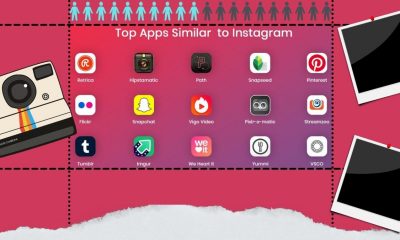Manage Your Business
Difference between Chatbot and Digital Agent

Technology evolves at such a fast pace that one has no choice but to keep up with it. Earlier, knowing a difference between a PC and a laptop meant you were tech savvy. However, now with the evolution in artificial intelligence there are several nuanced technologies that one will have to learn to differentiate between and adopt.
Difference between a Chatbot and Virtual assistant
Let us take two of the most current technologies powered by artificial intelligence – chatbots and digital agents. According to a study conducted by Capgemini this year, voice assistants are set to become a dominant mode of consumer interaction in the next three years – 24% already say they would use chatbots and voicebots instead of a website. The surge of voice assistants such as Google Assistant, Amazon Alexa and Apple’s Siri is transforming customer relationships dramatically, and businesses are being forced to consider how they can be leveraged. However, chatbots and digital agents are not exactly the same. With a host of tools available in the market currently, it would do well for one to remember the scope and role of both these technologies. For example, one of the key differences that can be pointed out is that a chatbot is largely server or company oriented while virtual assistants like Cortana or the more popular one Siri are user-oriented. Chatbots and digital agents are cut from the same cloth which is artificial intelligence which is being leveraged upon hugely by organization to automate several of their functions. The return on investment too has been massive too with artificial intelligence benefitting not just businesses but personal lives too. However, these two ‘intelligent’ applications of AI are often confused as one.
Chatbots are more like information interfaces that can perform tasks like extracting product details. Digital agents are more like virtual assistants who can support you in conducting various tasks such as meetings reminders, taking notes. When it comes to using digital agents for customer service they are able to provide a more human-like experience and have the ability to learn from experience and grow.
Both of them are quite similar, however it is necessary for a company to understand the nuances of the two in order to be able to effectively use them. Hence, let us look at them a little more in detail.

What do chatbots do?
Chatbots are essentially text-based software that are designed to reply to a given set of questions and hence cannot comprehend questions that are not preinstalled in their system. They cannot perform long conversations with a likeness to humans and do not have the particular ability of processing languages. They pick certain words and give a programmed answer and are thus very structured. Chatbots fail to reply if the question or statement is complex.
As such, this shows that chatbots essentially have limited use and do not have enhanced algorithms that can be used in areas of sophisticated customer support. Hence, chatbots are a basic requirement for most customer service requirement but they are limited in the tasks they carry out.
When it comes to the technology of chatbots, there are two types of models – generative and selective. The generator ranking model has a lot of layers and finally comes up with a suitable response based on what the user has requested. In the selective model, the information given by the user is ranked with its current memory information and goes into a sequence to come up with the best response. Chatbots can easily be made with languages node.js, javascript and python
What do digital agents do?
Contrary to chatbots, digital agents have a more sophisticated and interactive platform. They understand the language as well as the intention of the user and can learn from instances to predict future occurrences which in turn ensures that they can have a long human interaction. They are also able to process languages. Digital agents mainly concentrate on natural language processing (NLP) and Natural Language Understanding (NLU). There has been a substantial amount of research in NLP to build advanced capabilities in virtual assistants; case in point Virtual Assistants can now understand slangs used in everyday natural conversations and analyse the sentiments by the use of languages, to enhance an even better set of communication skills.
When it comes to tasks, digital agents have a wider scope and range such as decision making and eCommerce. They are more sentient and thus mature gradually with use.

Why adopt digital assistant?
New technologies are being innovated and created at a scary pace and companies are scrambling to adopt them. The motto that ‘customer is king’ applies to every single brand and hence it is important for companies to adopt technologies that help improve customer experience but at the same time reflect the brand persona as well. At the same time, it also helps the company to retain talent as customer service agents are no longer burdened by an onslaught of mundane, repetitive tasks and can thus enjoy a higher level of job satisfaction and less burnout. This newly found time will also enable agents to address complex service complaints and deliver a more personable customer experience.
Interestingly, using digital agents that are powered by conversational process automation has not only proven to increase customer satisfaction by leaps and bounds and has smoothened the operational process but it has also contributed to employee morale. Agents have self-reported higher employee satisfaction (ESAT) scores when using AI tools, which puts them at a lower risk of burnout, which in turn helps business owners manage turnover, decreasing recruiting and training expenses within the department.
Bottom line
Like we said in the beginning, there are several nuanced technologies that one will have to learn to differentiate between and adopt. With the rapid pace at which artificial intelligence is growing, we can expect newer disruptions at a shorter turnaround time. Our job has now become to understand the applications of this technology and to figure how they may be used in tandem so as to gain the best results.
-

 Marketing Tips6 days ago
Marketing Tips6 days agoWhat is my Instagram URL? How to Find & Copy Address [Guide on Desktop or Mobile]
-

 Cyber Risk Management2 days ago
Cyber Risk Management2 days agoHow Much Does a Hosting Server Cost Per User for an App?
-

 Grow Your Business6 days ago
Grow Your Business6 days agoBest Instagram-like Apps and their Features
-

 Outsourcing Development2 days ago
Outsourcing Development2 days agoAll you need to know about Offshore Staff Augmentation
-

 Software Development2 days ago
Software Development2 days agoThings to consider before starting a Retail Software Development
-
Marketing Tips6 days ago
B2B Instagram Statistics in 2024
-

 Grow Your Business1 day ago
Grow Your Business1 day agoThe Average Size of Home Office: A Perfect Workspace
-
Solution Review1 day ago
Top 10 Best Fake ID Websites [OnlyFake?]






